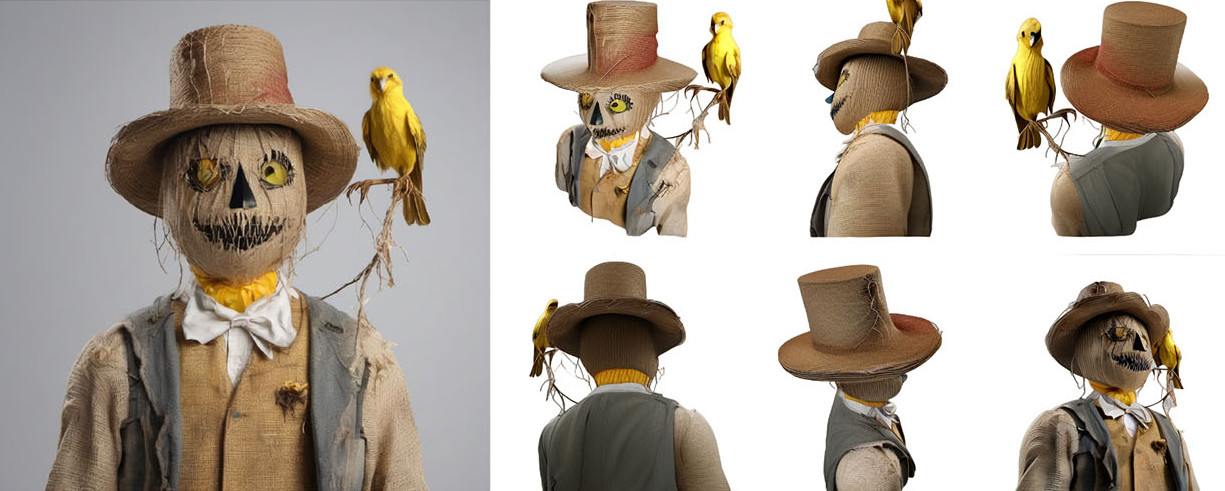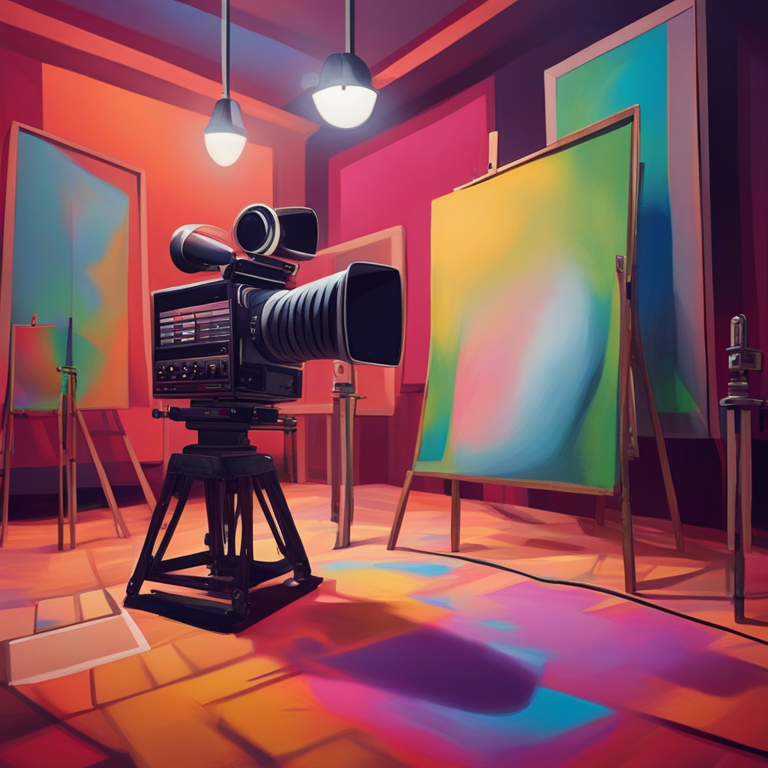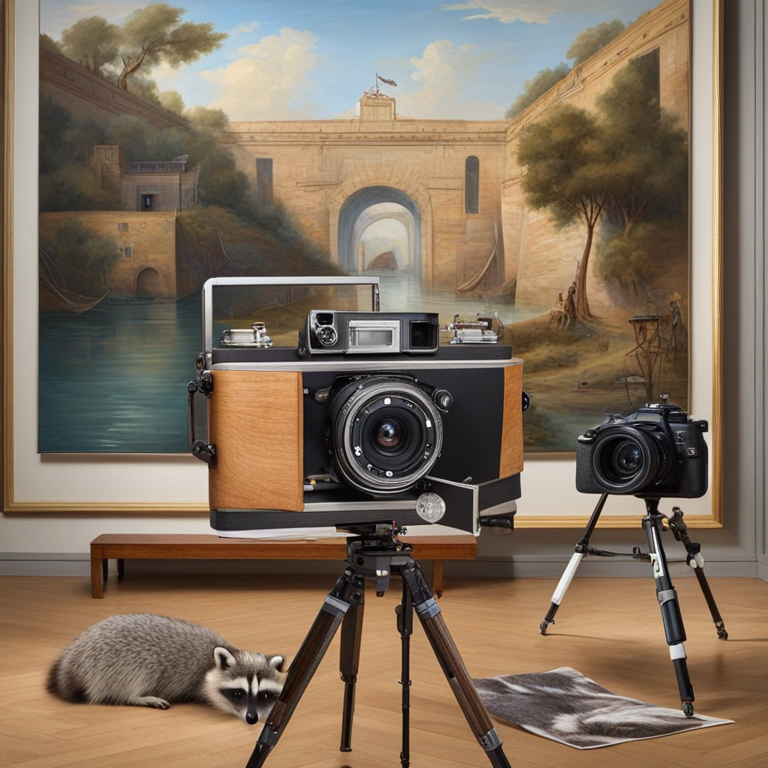Jd7h
Models by this creator

zero123plusplus

8
zero123plusplus is a novel AI model developed by jd7h that can turn a single input image into a set of consistent multi-view images. Unlike traditional 3D reconstruction methods, zero123plusplus is able to generate plausible views of an object from different angles starting from a single 2D image. This capability is achieved through the use of a diffusion-based approach, which allows the model to learn the underlying 3D structure of the input image. zero123plusplus builds upon prior work like One-2-3-45 and Zero123, further advancing the state-of-the-art in single-image 3D reconstruction. Model inputs and outputs zero123plusplus takes a single input image and generates a set of multi-view images from different 3D angles. The input image should be square-shaped and have a resolution of at least 320x320 pixels. The model can optionally remove the background of the input image as a post-processing step. Additionally, the user can choose to return the intermediate images generated during the diffusion process, providing a glimpse into the model's internal workings. Inputs Image**: The input image, which should be square-shaped and at least 320x320 pixels in resolution. Remove Background**: A flag to indicate whether the background of the input image should be removed. Return Intermediate Images**: A flag to return the intermediate images generated during the diffusion process, in addition to the final output. Outputs Multi-view Images**: A set of images depicting the input object from different 3D angles. Capabilities zero123plusplus demonstrates impressive capabilities in generating consistent multi-view images from a single input. The model is able to capture the underlying 3D structure of the input, allowing it to produce plausible views from various angles. This capability can be particularly useful for applications such as 3D visualization, virtual prototyping, and animation. The model's ability to work with a wide range of object types, from simple shapes to complex real-world scenes, further enhances its versatility. What can I use it for? zero123plusplus can be a valuable tool for a variety of applications. In the field of visual design and content creation, the model can be used to generate 3D-like assets from 2D images, enabling designers to quickly explore different perspectives and create more immersive visualizations. Similarly, the model's ability to generate multi-view images can be leveraged in virtual and augmented reality applications, where users can interact with objects from different angles. Beyond creative applications, zero123plusplus can also find use in technical domains such as product design, where it can assist in virtual prototyping and simulation. The model's outputs can be integrated into CAD software or used for mechanical engineering purposes, helping to streamline the design process. Things to try One interesting aspect of zero123plusplus is its ability to generate intermediate images during the diffusion process. By examining these intermediate outputs, users can gain insights into the model's internal workings and the gradual transformation of the input image into the final multi-view result. Experimenting with different input images, adjusting the diffusion steps, and observing the changes in the intermediate outputs can provide valuable learning opportunities and a deeper understanding of how the model operates. Another interesting avenue to explore is the integration of zero123plusplus with other AI models, such as depth estimation or object segmentation tools. By combining the multi-view generation capabilities of zero123plusplus with additional context information, users can unlock new possibilities for 3D scene understanding and reconstruction.
Updated 9/20/2024

propainter

2
ProPainter is an AI model developed by researchers at the S-Lab of Nanyang Technological University for object removal, video completion, and video outpainting. The model builds upon prior work on video inpainting like xmem-propainter-inpainting and object-removal, with improvements to the propagation and transformer components. ProPainter can be used to seamlessly fill in missing regions in videos, remove unwanted objects, and even extend video frames beyond their original boundaries. Model inputs and outputs ProPainter takes in a video file and an optional mask file as inputs. The mask can be a static image or a video, and it specifies the regions to be inpainted or outpainted. The model outputs a completed or extended video, addressing the specified missing or unwanted regions. Inputs Video**: The input video file to be processed. Mask**: An optional mask file (image or video) indicating the regions to be inpainted or outpainted. Outputs Completed/Extended Video**: The output video with the specified regions filled in or extended. Capabilities ProPainter excels at both object removal and video completion tasks. For object removal, the model can seamlessly remove unwanted objects from a video while preserving the surrounding context. For video completion, ProPainter can fill in missing regions caused by occlusions or artifacts, generating plausible content that blends seamlessly with the original video. What can I use it for? The ProPainter model can be useful for a variety of video editing and post-production tasks. For example, you could use it to remove unwanted objects or logos from videos, fill in missing regions caused by camera obstructions, or even extend the boundaries of a video to create new content. These capabilities make ProPainter a valuable tool for filmmakers, video editors, and content creators who need to enhance the quality and appearance of their video footage. Things to try One interesting aspect of ProPainter is its ability to perform video outpainting, where the model can extend the video frames beyond their original boundaries. This could be useful for creating cinematic video expansions or generating new content to fit specific aspect ratios or dimensions. Additionally, the model's memory-efficient inference features, such as adjustable neighbor length and reference stride, make it possible to process longer videos without running into GPU memory constraints.
Updated 9/20/2024

xmem-propainter-inpainting

1
The xmem-propainter-inpainting model is a generative AI pipeline that combines two models - XMem, a model for video object segmentation, and ProPainter, a model for video inpainting. This pipeline allows for easy video inpainting by using XMem to generate a video mask from a source video and an annotated first frame, and then using ProPainter to fill the masked areas with inpainting. The model is similar to other inpainting models like GFPGAN, Stable Diffusion Inpainting, LaMa, SDXL Outpainting, and SDXL Inpainting, which all aim to fill in or remove elements from images and videos. Model inputs and outputs The xmem-propainter-inpainting model takes a source video and a segmentation mask for the first frame of that video as inputs. The mask should outline the object(s) that you want to remove or inpaint. The model then generates a video mask using XMem and uses that mask for inpainting with ProPainter, resulting in an output video with the masked areas filled in. Inputs Video**: The source video for object segmentation. Mask**: A segmentation mask for the first frame of the video, outlining the object(s) to be inpainted. Mask Dilation**: An optional parameter to add an extra border around the mask in pixels. Fp16**: A boolean flag to use half-precision (fp16) processing for faster results. Return Intermediate Outputs**: A boolean flag to return the intermediate processing results. Outputs An array of URIs pointing to the output video(s) with the inpainted areas. Capabilities The xmem-propainter-inpainting model can perform video inpainting by leveraging the capabilities of the XMem and ProPainter models. XMem is able to generate a video mask from a source video and an annotated first frame, and ProPainter can then use that mask to fill in the masked areas with inpainting. This allows for easy video editing and object removal, making it useful for tasks like removing unwanted elements from videos, fixing damaged or occluded areas, or creating special effects. What can I use it for? The xmem-propainter-inpainting model can be useful for a variety of video editing and post-production tasks. For example, you could use it to remove unwanted objects or people from a video, fix damaged or occluded areas, or create special effects like object removal or replacement. The model's ability to work with video data makes it well-suited for tasks like video cleanup, VFX, and content creation. Potential use cases include film and TV production, social media content creation, and video tutorials or presentations. Things to try One interesting thing to try with the xmem-propainter-inpainting model is using it to remove dynamic objects from a video, such as moving people or animals. By annotating the first frame to mask these objects, the model can then generate a video mask that tracks their movement and inpaint the areas they occupied. This could be useful for creating clean background plates or isolating specific elements in a video. You can also experiment with different mask dilation and fp16 settings to find the optimal balance of quality and processing speed for your needs.
Updated 9/10/2024